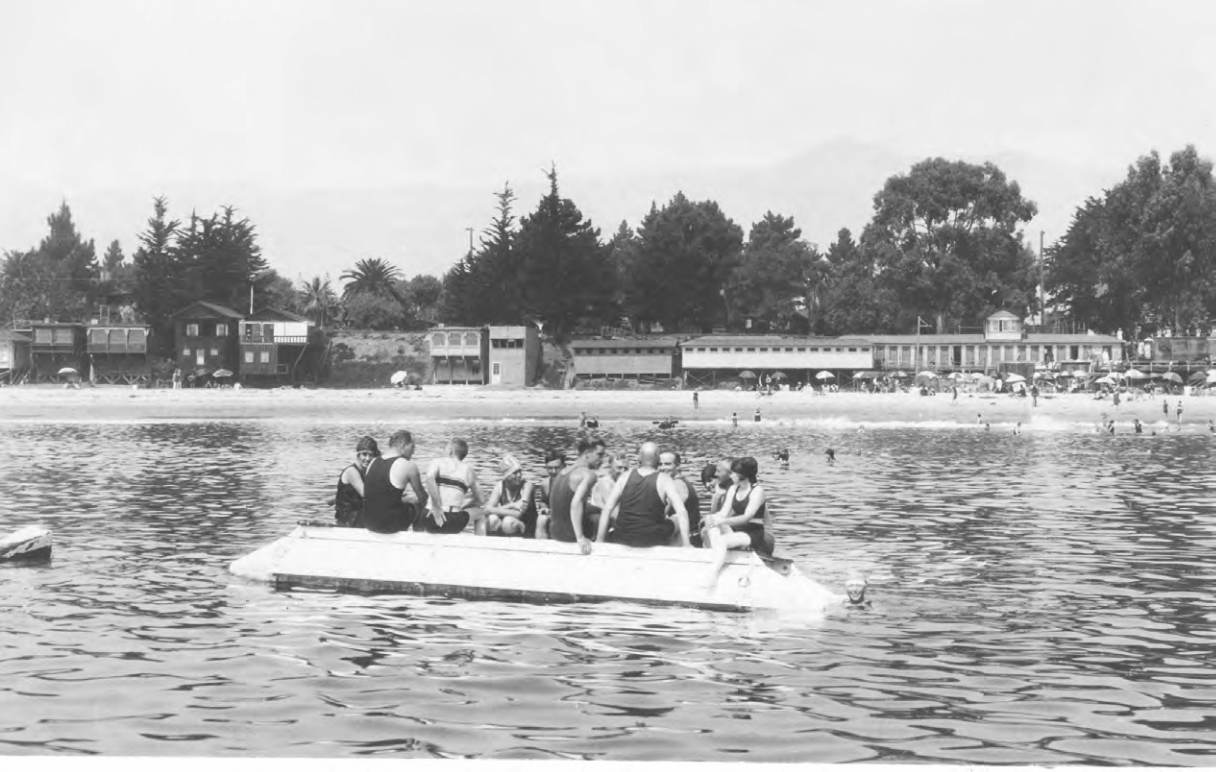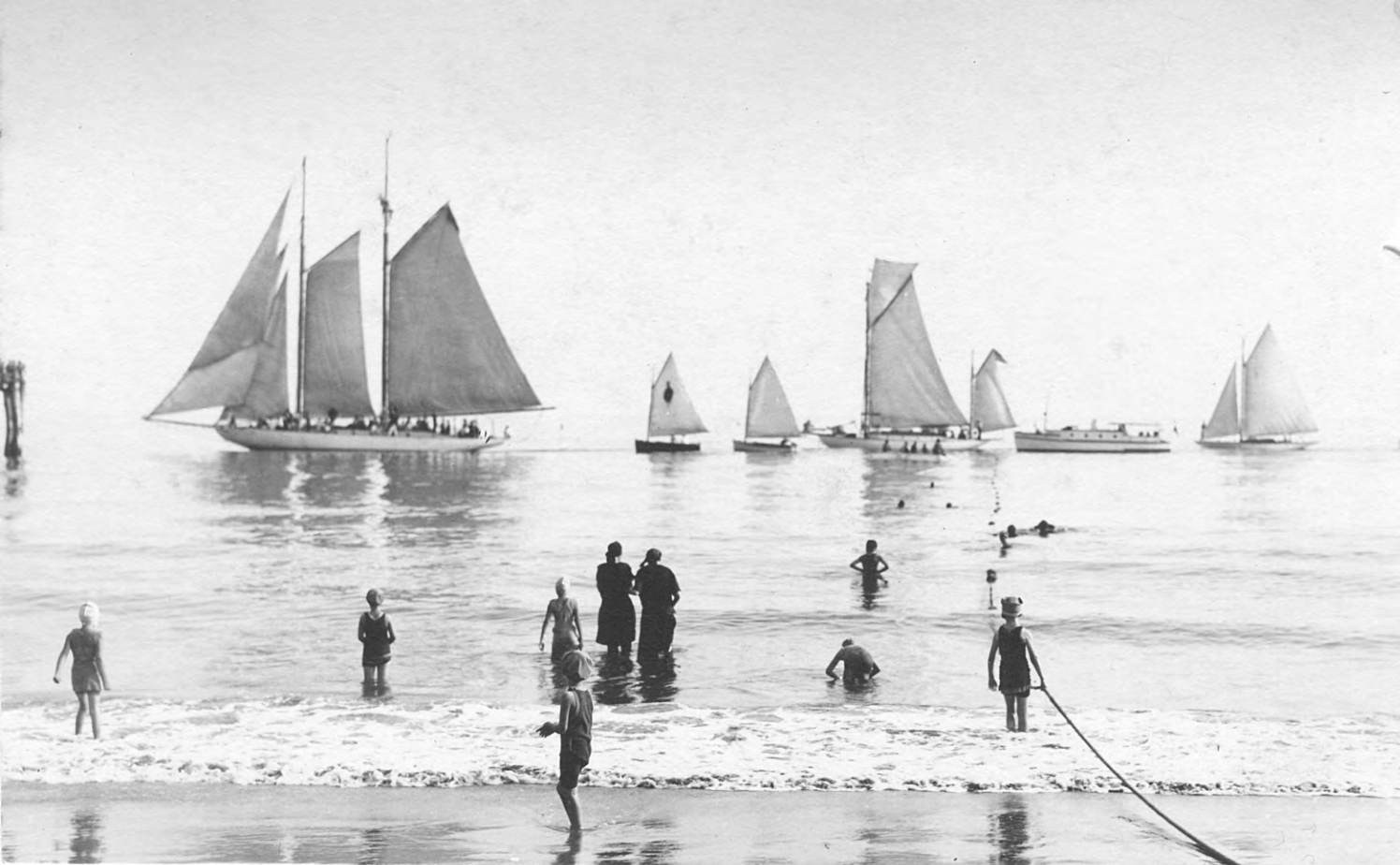Basic HTML Version




52
summer
|
fal l
playground was built on the sand. During the summer months, the
Miramar hosted moon boat races between their pier and Stearns Wharf.
The hotel also organized beach rides and picnics for its guests.
Ocean View Farm
The same year the railroad arrived in Santa Barbara, a friend of
Josiah Doulton and his wife, Emmeline, begged to spend the summer
on their farm and offered to pay. Reluctantly, they agreed. By the end
of summer, the Doultons realized that farming tourists could be more
profitable than farming barley, corn, beans and fruit. Their Ocean
View Farm became the Miramar Hotel. Over the next several years,
tent cabins and cottages sprouted on the property. Hayfields were
replaced by colorful flowerbeds, specimen trees, expansive lawns and
meandering paths.
Recognizing that the wide sandy beach was their most revered
attraction, the Doultons built a pier in 1890 (which was extended 500
feet in 1906); by 1893, they had added bathhouses in the lee of the bluffs.
Eventually, 250 changing rooms were built on a boardwalk. (Guests were
not allowed to pass through the property in their bathing suits.) Visitors
arriving by sea could tie up to the pier, and those who came by train could
disembark at the Miramar’s own station.
Santa Barbara residents often used the train for excursions to the
beach at Miramar. There they could rent a cabaña and partake of food and
drink at the waterfront restaurant and bar. Their children built castles in
the sand, fished from the pier, and swam out to a raft that was firmly tied
with a stout rope to a pole embedded in the sand. Much later, a children’s
A Miramar Guest in 1906
Miramar guests in the late 1800s and early 1900s often stayed
for a month or more at a time. Jessie Porter Whittaker described her
idyllic stay at the Miramar in the summer of 1906 in an article for
The
New York Times.
Staying in one of the flower-embowered cottages, she
wrote, “We sit around on the cool piazza or under the shade of the great
trees and watch the tennis players work; go to the cliff and laugh at the
bathers fighting the billows of cold ocean, or swing a hammock under the
pines….”
Not completely indolent, she wrote, “A walk on the beach at low tide
adds variety to the day. There are shells and seaweeds, strange little sea
monsters and their queer little homes; black heads of seals bob up from
the blue water and now a great fat porpoise goes somersaulting through
the waves.
The Bromfield family and friends frequented Miramar Beach in the 1920s
(photo courtesy of Montecito Association History Committee)
Dora Bromfield Bradley sits in the shade of a paper Chinese parasol in the 1920s
(photo courtesy of Montecito Association History Committee)

